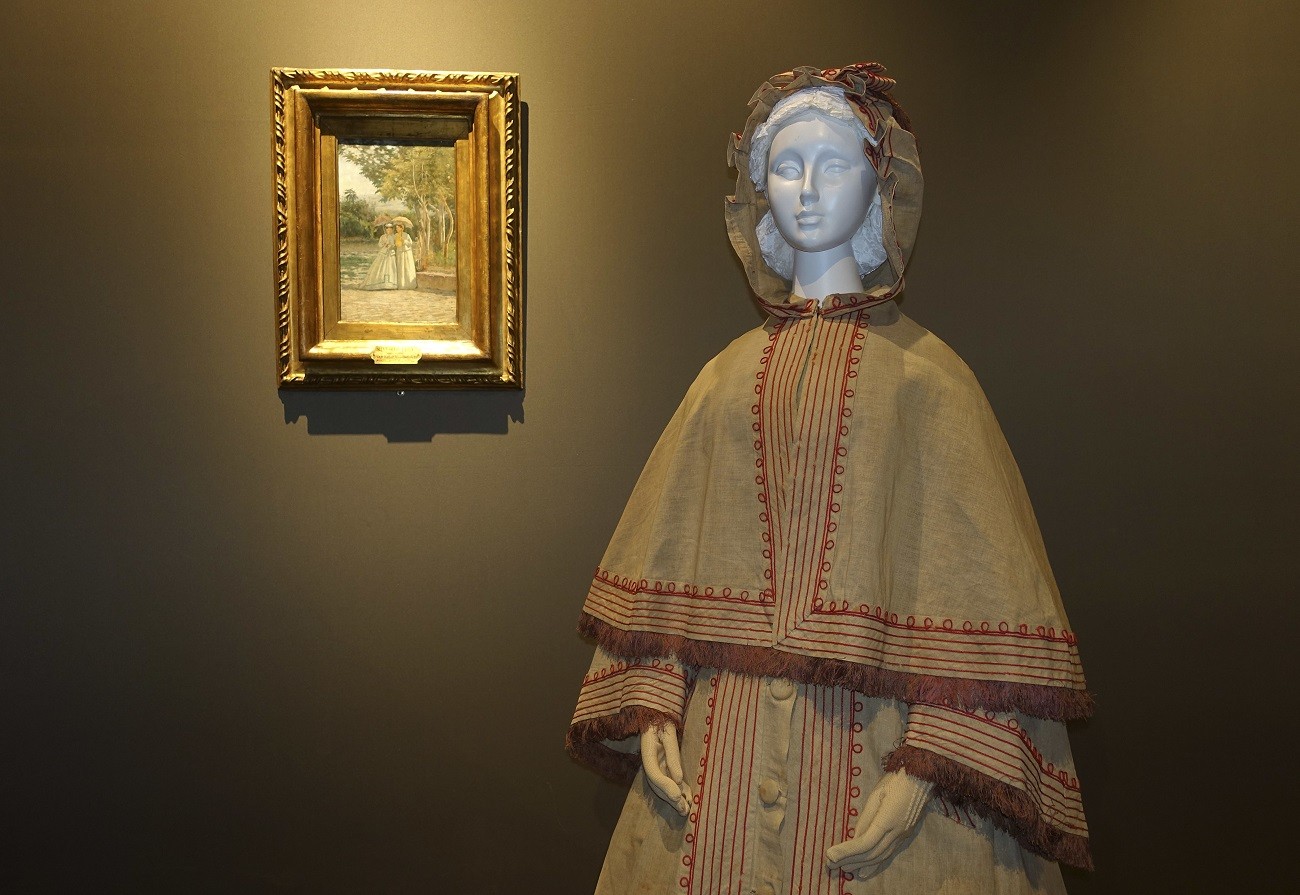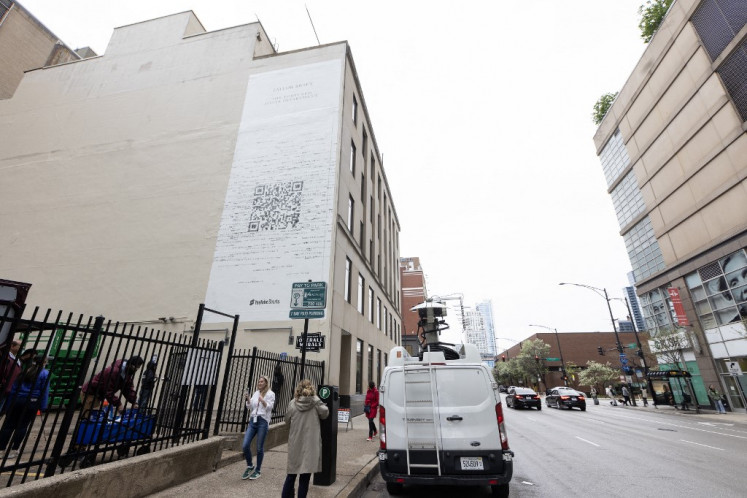Florence exhibits examine the art-fashion dynamic
Change Size
 In this photo taken on Tuesday, May 17, 2016, an Italian-made linen garden dress with hooded cape, made in 1865, is shown alongside a 19th Century painting from the Uffizi Gallery's Galleria di Arte Moderna collection depicting a similar style for a collateral show at Pitti Palace in Florence, Italy, organized as part of the "Across Art and Fashion'' series of exhibits at locations throughout Florence. The exhibit opened Thursday as Italy's Renaissance capital is reclaiming its centuries-old role as an incubator of the fashion-art dynamic. (AP/Colleen Barry)
In this photo taken on Tuesday, May 17, 2016, an Italian-made linen garden dress with hooded cape, made in 1865, is shown alongside a 19th Century painting from the Uffizi Gallery's Galleria di Arte Moderna collection depicting a similar style for a collateral show at Pitti Palace in Florence, Italy, organized as part of the "Across Art and Fashion'' series of exhibits at locations throughout Florence. The exhibit opened Thursday as Italy's Renaissance capital is reclaiming its centuries-old role as an incubator of the fashion-art dynamic. (AP/Colleen Barry)
I
taly's Renaissance capital, Florence, is reclaiming its centuries-old role as an incubator of the interplay between fashion and art.
The new director of the Uffizi gallery has announced plans to transform the Costume Gallery at Pitti Palace, which is also under his control, into a full-fledged fashion museum, while the Ferragamo Foundation this week opens a city-wide exhibit exploring the links between art and fashion.
[Read also: Local designers set to compete globally at Fashion Week]
Under the banner "Across Art and Fashion," the exhibits opened Thursday at the Salvatore Ferragamo Museum with linked events at four other venues.
The complementary exhibits are the first in Italy to comprehensively explore the relationships between two of the nation's most significant cultural contributions, according to Ferragamo museum director Stefania Ricci, who served as the driving force behind the ambitious exhibition project.
In Florence's Renaissance heyday, the connection between art and fashion was even tighter than it is today.
"In the 15th century, there was no difference between artisan and artist," Ricci said, citing Raphael's designs for hand fans and Pollaiuolo's textile designs. "Then slowly the two worlds separated, because fashion was functional, the reality. Art became always more conceptual. But what is interesting is they always kept an eye one on the other."
Artists were demonstrably inspired by fashion in the 1800s, as is evident in the linked event at the Modern Art Gallery of Pitti Palace. Ricci said featuring fashion of the day was a way for artists to convey modernity in their works, and curators have paired garments from the Costume Gallery with paintings that feature similar, if not identical, looks.

At the Ferragamo Museum, the connections are even more entwined. The shoemaker modeled his atelier after a Renaissance craftsman's studio, and the shoe molds on display alongside original footwear emphasize their artistic nature.
More than a dozen brands are represented in the museum, including a Schiaparelli skirt suit with buttons made for her by friend Alberto Giacometti and a Vionnet silken tunic dress from 1922 featuring geometric motifs, on a rare loan from the Louvre.
The itinerary continues at the National Central Library and the Marino Marini Museum, both in Florence, and the Textile Museum in nearby Prato.
The art and fashion exhibits, more than a year in the making, highlight a budding synergy in Florence. The city's role as the genius loci of modern fashion also caught the attention of Uffizi director Eike Schmidt, a German who last year became the first foreigner to run the highly prized state museum system in Florence including the Pitti Palace collections.
[Read also: Met fashion exhibit explores dialogue between hand, machine]
Schmidt is quietly expanding the costume collection and intends to make it a fashion museum in its own right, focusing on fashion from anywhere on the globe, not just Italy. At the moment, the collection is strongest in the 19th and early 20th Century, with a smattering of 1960s and 1970s pieces. The last big collection is a donation from Gianfranco Ferre in 2000.
The transformation already is underway with an exhibit of Karl Lagerfeld photographs opening at Pitti Palace in June, while Schmidt is on the lookout for new collections on the market. Behind the scenes, he is constructing a new storage area to house all the acquisitions he is planning.
"It's the right place but it is also the right moment to do this now," Schmidt told The Associated Press. "Because there is so much interest in fashion right now."









